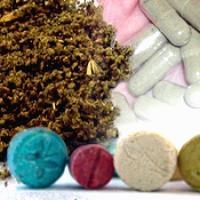(BRUSSELS) – The European Drug Report 2018, issued by the EU drugs agency Thursday, highlights increased availability of cocaine in Europe, with around 2.3 million young adults having used the drug in the last year.
The development occurs, says the report, in the context of a dynamic drug market which is able to adapt rapidly in response to drug control measures. In its annual overview, the agency also explores challenges associated with new psychoactive substances (NPS), including: the availability of new synthetic opioids (particularly highly potent fentanyl derivatives); and problems associated with the use of synthetic cannabinoids in marginalised groups (including the prison population).
The European Drug Report provides a comprehensive analysis of recent drug trends across the 28 EU Member States, Turkey and Norway.
The EMCDDA report notes that, across the board, drug availability is high and, in some areas, appears to be increasing. Latest figures show that in Europe (EU-28, Turkey and Norway) over 1 million seizures of illicit drugs were reported in 2016. Over 92 million adults in the EU (1564 years) have tried an illicit drug in their lifetime and an estimated 1.3 million people received treatment for illicit drug use in 2016 (EU-28).
“We are seeing higher drug production and availability in Europe today,” said Home Affairs Commissioner Dimitris Avramopoulos: “On top of that, the illicit drug market is highly dynamic and adaptable – and therefore all the more dangerous. If we want to stay ahead of the game, our efforts must focus on building both resilience and responsiveness, not least because of the growing importance of the online market and the development of new types of drugs. With the new rules on new psychoactive substances entering into force by the end of the year, Europe will be equipped with additional, stronger tools to tackle those challenges more effectively and better protect European citizens against dangerous drugs.”
Cocaine is the most commonly used illicit stimulant drug in Europe. Around 2.3 million young adults (1534 years) have used the drug in the last year (EU-28). Against a backdrop of signs of rising coca cultivation and cocaine production in Latin America, the agency’s analysis confirms that Europe’s cocaine market is buoyant, with indicators now pointing to increased availability of the drug in a number of countries.
Although the price of cocaine remained stable, its purity at street level reached its highest level in a decade in 2016.
The number of cocaine seizures has also risen. Some 98,000 seizures of the drug were reported in the EU in 2016 (90,000 in 2015), amounting to 70.9 tonnes.
The report also reveals a rise in the number of first-time admissions to specialised treatment relating to cocaine. In 2016, 30,300 clients entered treatment for the first time for problems with this drug, over a fifth more than in 2014. In total, over 67 000 clients entered specialised treatment for cocaine-related problems in 2016. Of particular concern are the estimated 8 300 clients who entered treatment for primary crack cocaine use in 2016. Furthermore, cocaine was the second most common drug to be reported in drug-related hospital emergency presentations in a network of 19 sentinel hospitals in 2016.
Trafficking methods and routes also appear to be changing. The Iberian Peninsula historically the main entry point for maritime shipments of cocaine into Europe though still important, appears less prominent in the 2016 data, with large seizures now reported in container ports further north. In 2016, Belgium seized 30 tonnes of cocaine (43% of the annual estimated total amount of cocaine seized in the EU).
Cannabis remains the most widely used illicit drug in Europe, its prominence evident in data on prevalence, drug law offences, seizures and new treatment demands. Some 17.2 million young Europeans (1534 years) have used cannabis in the last year (EU-28) and around 1% of European adults (1564 years) are daily or almost daily users (EU-28).


